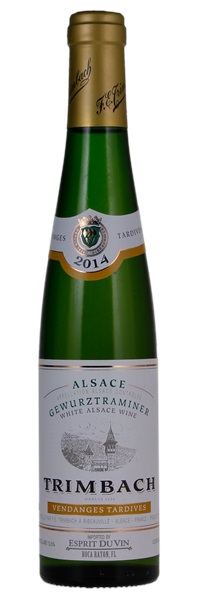Estimate

...intense, clear and concentrated nose of rose petals, spices and lemon confit. Concentrated, very piquant and stimulating, this is a sweet, dense and concentrated...piquant, Gewurz with a gorgeous tannin grip...
... Knockout pure aromas of grapefruit, lemon oil, orange blossom, cinnamon and lichee are complicated by enticing notes of lemony, smoky botrytis. Wonderfully dense and vibrant in the mouth, offering strong flavors of ripe grapefruit, canned peach, marzipan and white flowers. Highly complex, chewy wine with a very pure, long finish featuring orange marmalade and lemon oil nuances...
A wine with dried apple, mango and spice character. Hints of dust and concrete too. Full-bodied and off dry with plenty flavor at the finish.